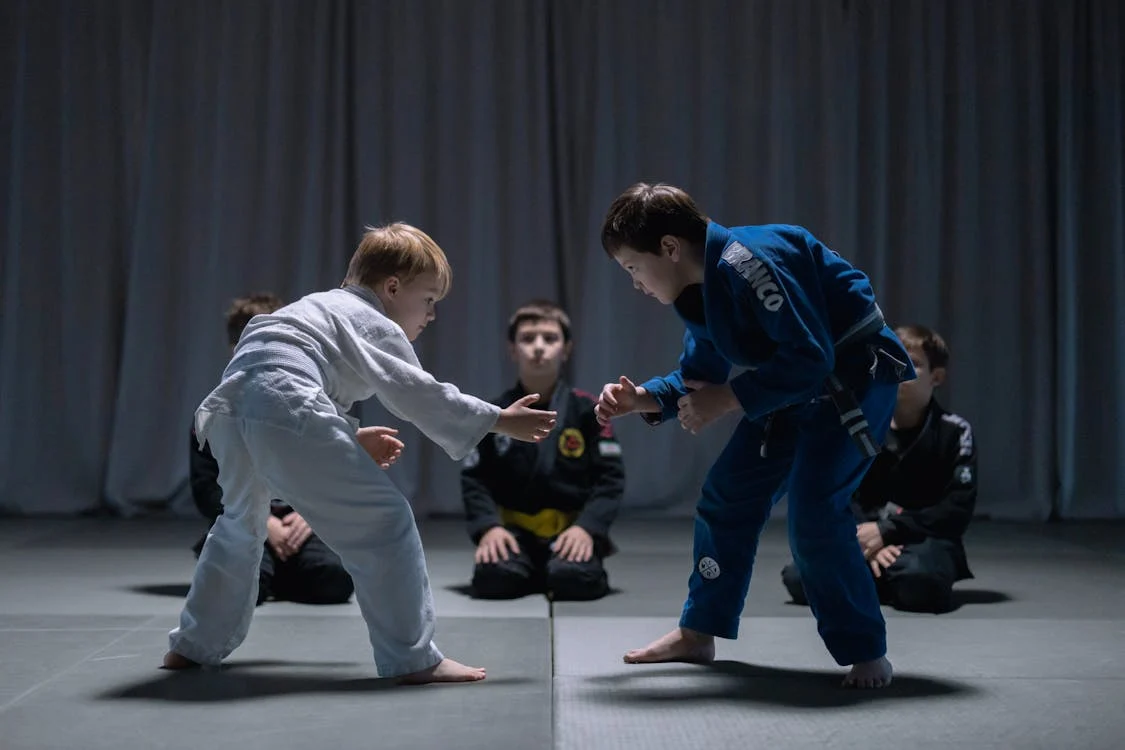
Why Kids Brazilian Jiu-Jitsu (Ages 6 to 14) is the Perfect Sport for Your Child
Are you looking for a fun and effective way for your child to stay active, build discipline, and develop self-confidence? Brazilian Jiu-Jitsu (BJJ) offers all of this and more, making it an excellent choice for children between the ages of 6 and 14. Whether you’re a parent new to martial arts or already familiar with the benefits, Brazilian Jiu-Jitsu is a powerful tool for your child’s growth. Lets explore why kids’ Brazilian Jiu-Jitsu is so valuable, answer the most frequently asked questions, and provide details on how to get started with a free class trial!
What Is Brazilian Jiu-Jitsu?
Brazilian Jiu-Jitsu (BJJ) is a martial art that focuses on ground fighting, grappling, and submissions. The sport teaches children to defend themselves using technique and leverage rather than strength, which makes it an accessible martial art for kids of all sizes. In BJJ, students learn how to control, submit, and defend against opponents in various situations, fostering mental sharpness and physical agility.
The Importance and benefits of Brazilian Jiu-Jitsu for Kids (Ages 6 to 14)
Brazilian Jiu-Jitsu isn’t just about self-defense – it provides numerous benefits that support your child’s overall development. Here are some of the key reasons why BJJ is a perfect sport for kids:
-
Self-Confidence and Personal Growth
BJJ is structured around belt levels, where children advance through consistent effort and mastery of skills. This sense of achievement, combined with overcoming challenges on the mat, boosts a child’s confidence. As kids succeed in their training, they learn perseverance and resilience, essential qualities that transfer into all areas of their lives.
-
Physical Fitness and Coordination:
Brazilian Jiu-Jitsu is an excellent full-body workout that improves strength, flexibility, and coordination. With its emphasis on grappling, children enhance their balance, mobility, and endurance. It also helps develop both aerobic and anaerobic fitness in a fun, non-intimidating environment.
-
Discipline and Focus:
Training in Brazilian Jiu-Jitsu requires concentration, respect, and adherence to rules – qualities that promote discipline. Children quickly learn the importance of listening to their instructors and following guidelines, which positively influences their behavior both in and outside of class.
-
Problem-Solving Skills:
BJJ isn’t just physical; it’s mental too! Kids are taught to think critically, assess different situations, and adapt their techniques accordingly. This promotes a growth mindset, allowing them to overcome obstacles with creativity and strategy.
-
Social Interaction and Teamwork:
In BJJ classes, kids interact with peers in a respectful and supportive environment. The martial art fosters teamwork and camaraderie, as children work together to learn and improve. These social interactions help kids build friendships and develop strong communication skills.
-
Bullying Prevention and Self-Defense:
Through Jiu Jitsu, children acquire practical self-defense skills that can help them stand up for themselves in situations of bullying. The art focuses on leverage and control, ensuring that children can defend themselves without needing to resort to aggressive or harmful behavior.
FAQs About Kids Brazilian Jiu-Jitsu
-
At what age can my child start Brazilian Jiu-Jitsu?
Most BJJ academies offer classes for children as young as 4 to 6 years old. At this age, kids begin to develop basic coordination and understand the fundamental movements of BJJ. The curriculum becomes more complex as they grow older.
-
Is Brazilian Jiu-Jitsu safe for kids?
Yes! Brazilian Jiu-Jitsu is designed with safety in mind. Unlike striking-based martial arts, BJJ emphasizes control and submission, reducing the risk of injury. Instructors are highly trained to ensure that kids are practicing techniques safely and appropriately for their skill level.
-
Do kids need to have prior experience in martial arts?
No prior experience is required! Brazilian Jiu-Jitsu is suitable for beginners, and classes are often structured for all skill levels. Your child will progress at their own pace as they build confidence and improve their skills.
-
What equipment does my child need to start Brazilian Jiu-Jitsu?
For most academies, kids start with a basic gi (a special uniform for BJJ) and a belt. Some academies offer rental gis for new students, but purchasing a gi is typically necessary for long-term participation. Comfortable training attire is recommended for no-gi classes.
-
How often should my child train?
Training frequency depends on your child’s schedule and goals, but generally, attending classes 2 to 3 times a week is ideal for steady progress. Consistency is key to mastering techniques and improving overall fitness.
-
What if my child doesn’t like it?
Many children enjoy the structured yet fun environment of BJJ classes. However, if your child is not a fan after a few classes, we recommend speaking with the instructor to address any concerns. We also offer a free trial class so your child can experience the sport firsthand before committing.
Why Choose Muay Thai Whitby for Kids Jiu Jitsu?
At our academy, we provide a fun and engaging atmosphere where your child can learn at their own pace. Our certified instructors are skilled in teaching kids and are dedicated to helping each student grow both physically and mentally. Plus, we ensure that all classes are age-appropriate and tailored to the needs of children aged 6 to 14.
Ready to Get Started?
We offer free trial classes for new students, so your child can experience the benefits of Jiu Jitsu firsthand before committing. Whether your child is new to martial arts or has some experience, our Jiu Jitsu program will help them unlock their full potential.
Don’t wait! Sign up your kid for a Free Class Now! And see the positive impact Jiu Jitsu can have on their life.

